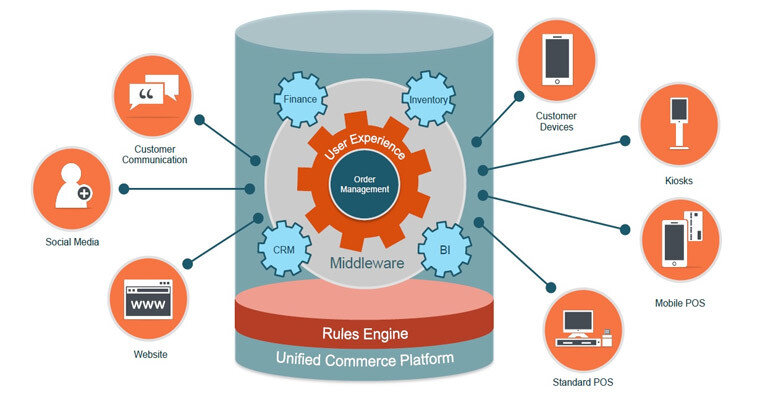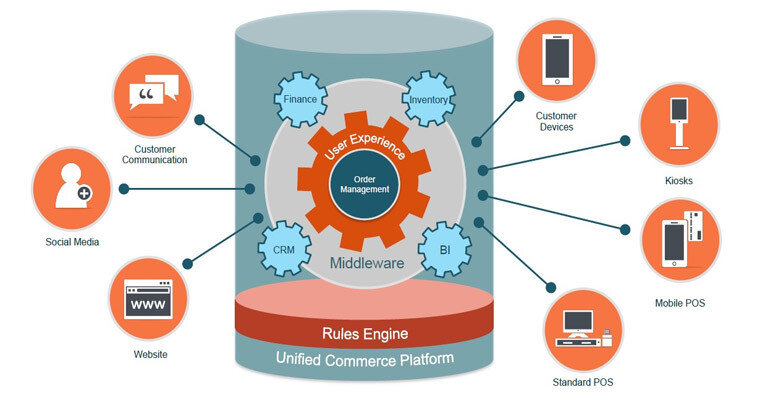Is Unified Commerce the new Omnichannel 2.0?

Reading time:
minutes
While many companies are still struggling to connect their online business with stationary trade and to let the individual channels communicate with each other, a new trend called Unified Commerce (AmPnBsP) is coming from overseas;
But what does this mean and is Unified Commerce yet another buzzword with which one can put oneself in the foreground in professional discussion groups? Or is it the new Omnichannel 2.0 in e-commerce?
Where does the term Unified Commerce come from?
For the first time, this term appeared in a study by Boston Retail Partners (BPR). According to BPR, the primary objective is to consider the positive customer experience as the top priority. This can be done by using a consolidated platform to get away from the internal channels that use their own data silos. Instead, the e-commerce future lies in a centralized single real-time platform for all customer engagement points.

Source: Boston Retail Partners
To most readers this will sound like a standardized Omnichannel story. Ken Morris, partner and co-founder of BRP explains the difference:
"In omnichannel, you have multiple channels, but you don't have one piece of software, one version of the truth. "In the unified commerce world, it's all connected in real time. I don't just mean the web side, but the mobile side, the web side and the store side-all in real time.
In plain language, this means that the same destination exists for Omnichannel. However, this is achieved with several connected solutions. These do not have a common database, but many individual interconnected data silos. Unified Commerce goes one step further and wants to connect the individual channels in real time, and this can only be done with a central platform.
Suite or integration idea
This central platform is either an all-in solution for e-commerce, CRM, WCM, MAM, PIM etc. or a middleware that holds all data
These concepts seem familiar to some people. Ultimately, variant one is about an e-commerce suite and variant two about an enterprise application integration solution. The approaches are not new and revolutionary. However, this does not yet exist in e-commerce.

Source: Boston Retail Partners
If you look around the market, you will quickly notice that the big players in the industry have already taken the right direction. This is the case, for example, with SAP with the acquisition of hybris or IBM (Roadmap to Unified Commerce Success with OneView Commerce and IBM). The companies try to cover as much as possible with their broad-based suites so that the customer only has one manufacturer and one technology. Apart from the commitment to only one software partner, this concept brings a lot of advantages. The IT is significantly relieved by the homogenization of the software landscape
It's gonna be a while before that happens. But most retailers plan to implement a unified trading platform
Statistics on Unified Commerce
The National Retail Federation, Ecommerce Europe and Ecommerce Foundation, in partnership with Demandware (now: Salesfore commerce cloud), conducted a survey of 300 U.S., European and Australian retailers and IT executives
According to the survey, 53% of respondents plan to implement a unified commerce platform in the next few years. In the next 10 years, 86% of the retailers surveyed plan to have a unified commerce platform.
In addition, the retailers surveyed expect that a consolidation of historically evolved technologies into a single commerce platform, including point of sale, e-commerce, call center and mobile, will lead to improvements in IT innovation and significantly greater efficiency. Specifically, almost half (45%) of retailers expect a significant improvement in their ability to meet business requirements more quickly. Another 35% say they expect IT efficiency improvements including data security, maintenance costs and infrastructure.
Respondents indicated that margins, brand equity and revenues will improve by unifying their point-of-sale, e-commerce and other consumer-based platforms.
Specifically, the survey found that more than half (52%) reported a significant improvement over controllable items that have a direct impact on margin. This includes inventory turnover and returns
46% expect an increase in brand value. In particular, they expect significant improvements due to positive effects on the total customer value and their net promoter score.

